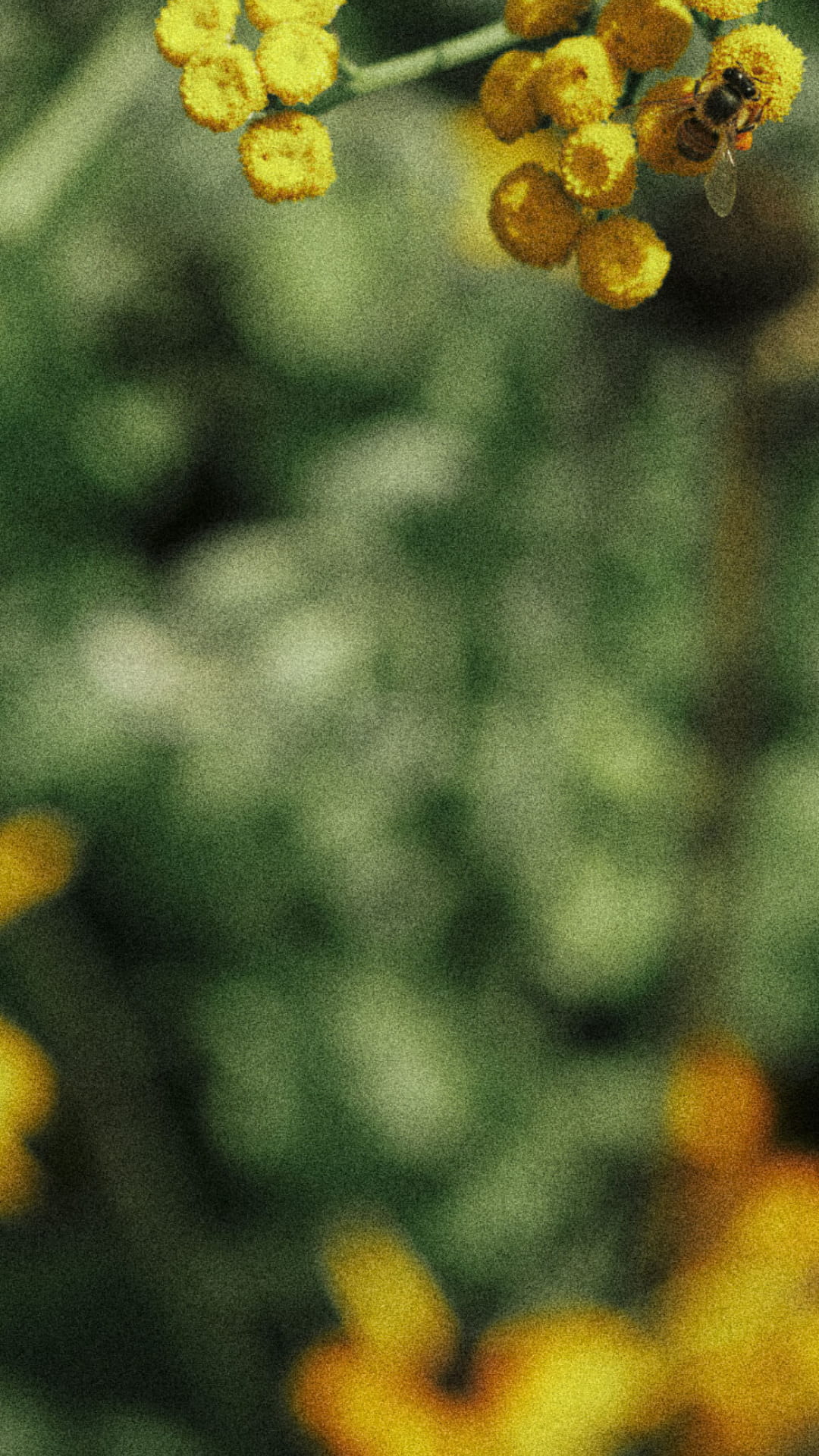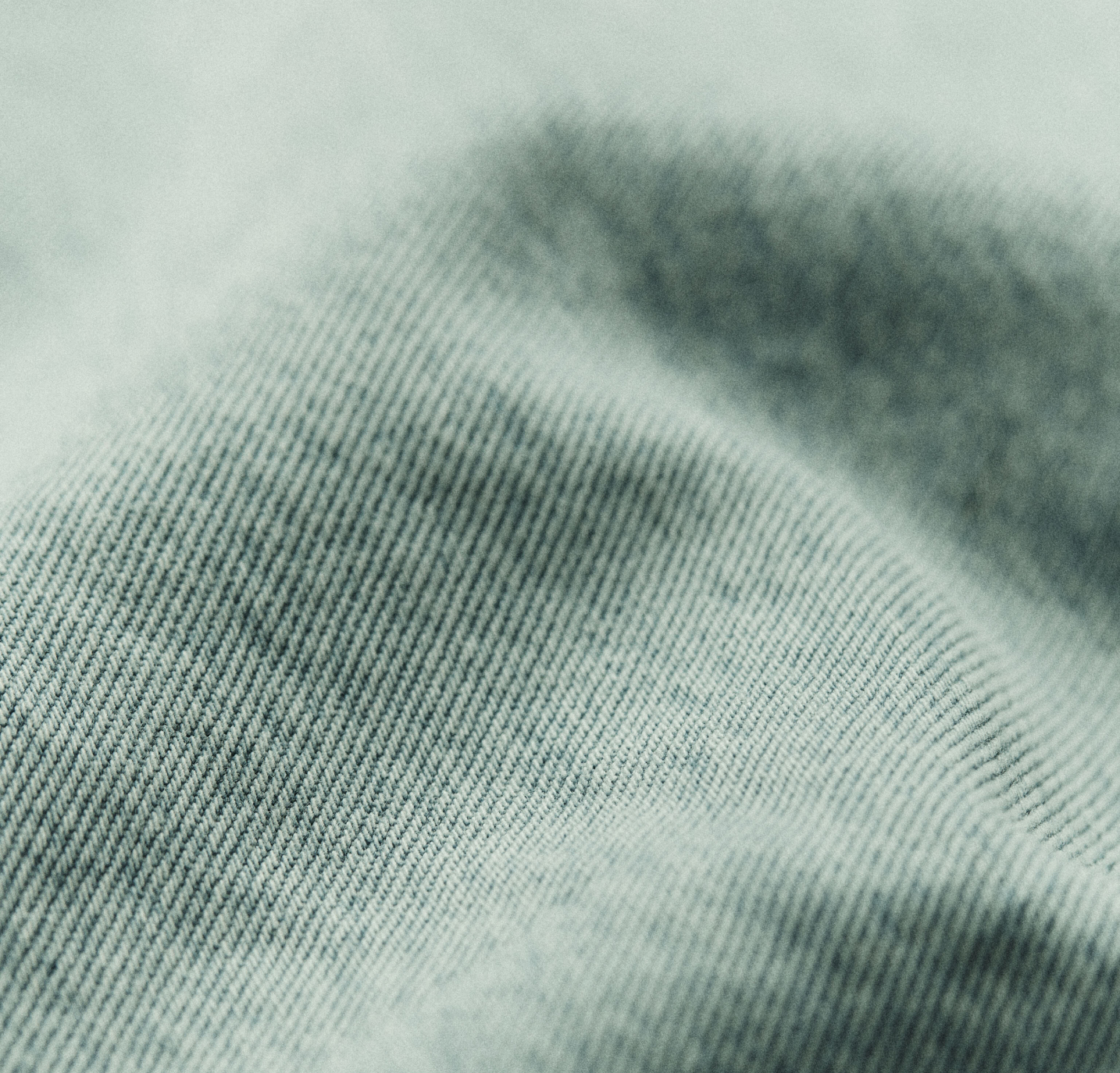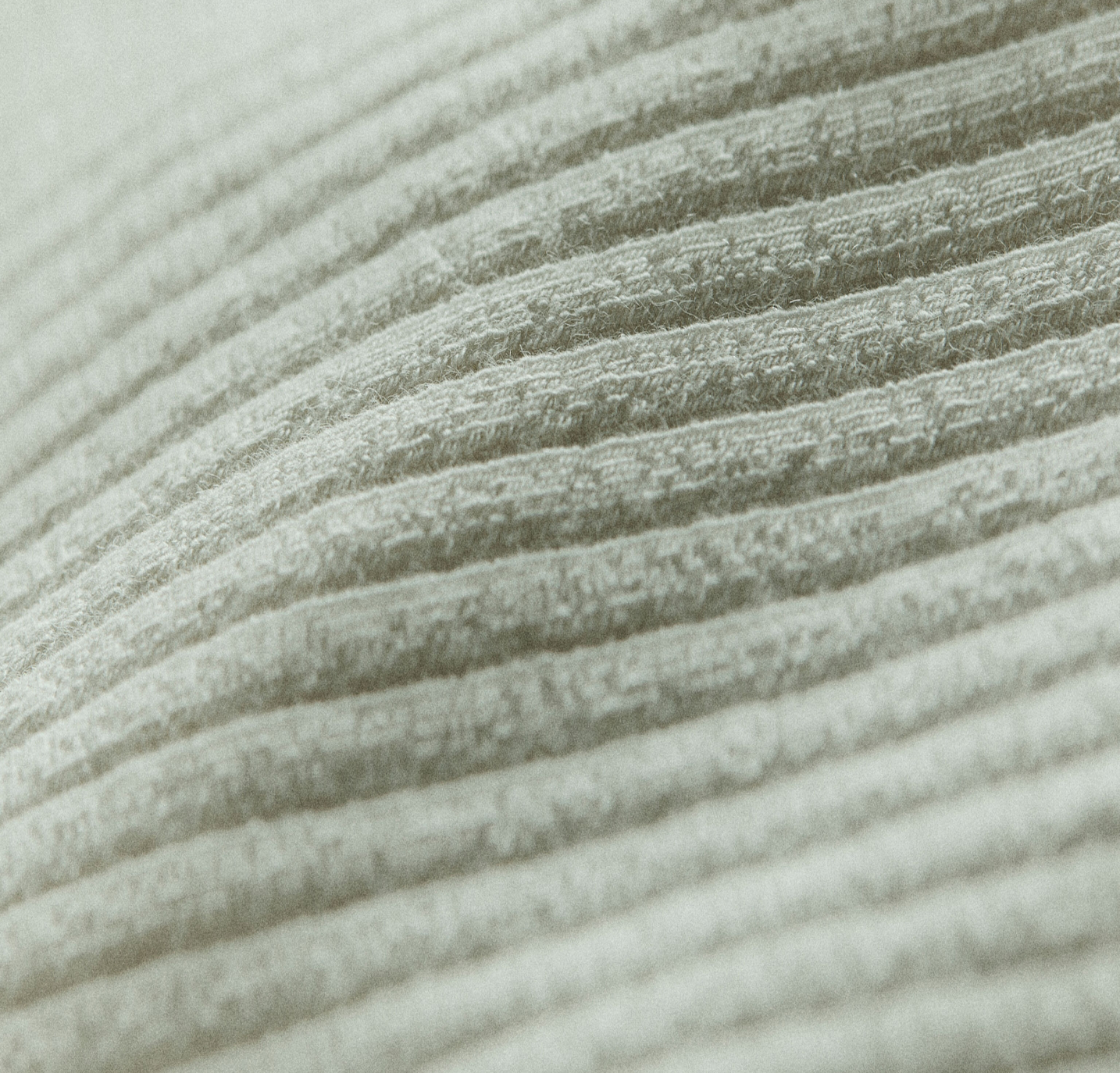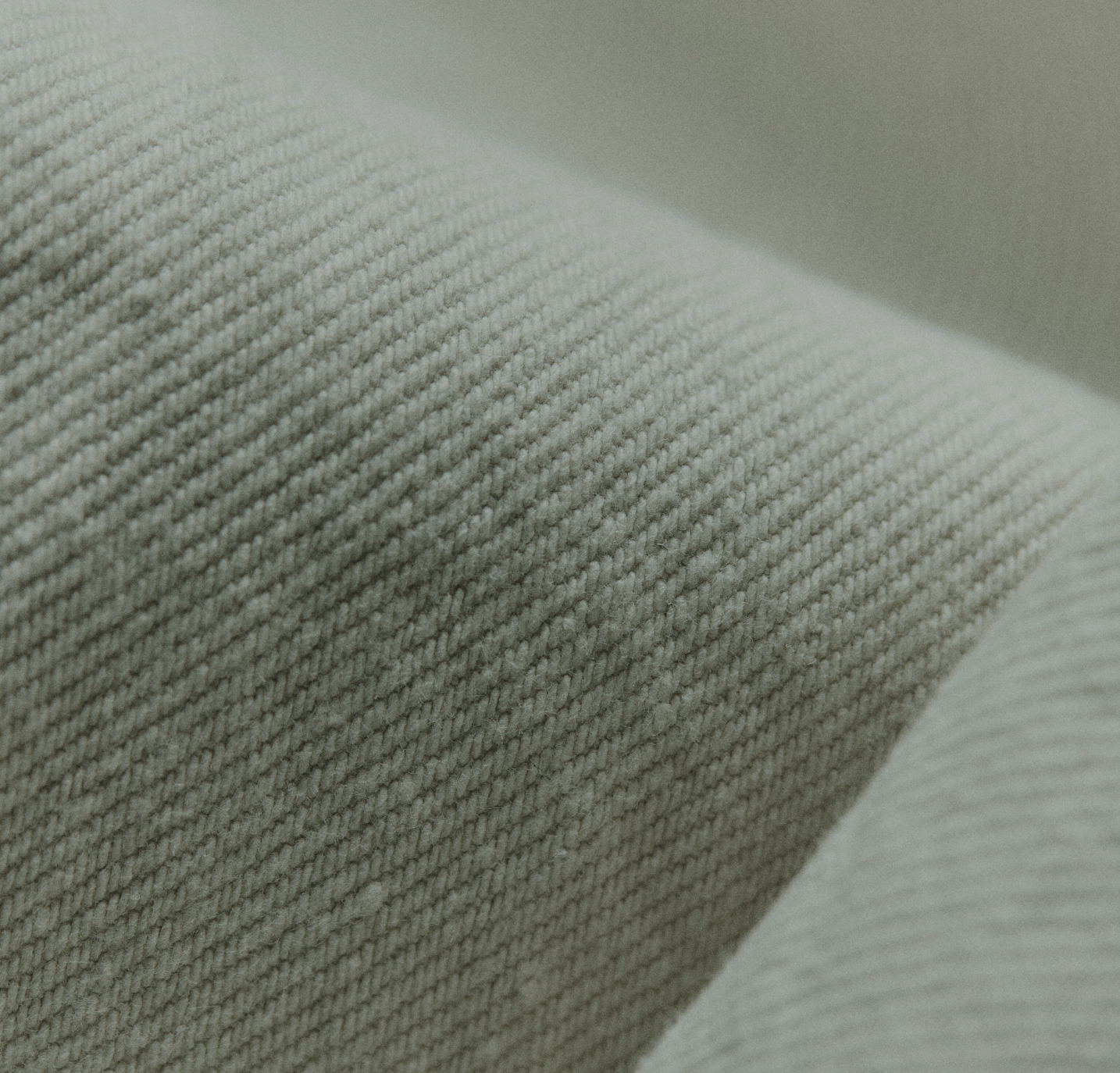Sustainability Landing Page
Made smarter
Fiber Standards
We developed Ref Fiber Standards
to grade materials based on their
combined social and environmental
impact. And we’re super thorough.
to grade materials based on their
combined social and environmental
impact. And we’re super thorough.
Since you and Earth deserve the
best, our goal is to source
best, our goal is to source
0%
of our fabrics from recycled,
regenerative, or renewable
materials by 2025.
regenerative, or renewable
materials by 2025.

Since you and Earth deserve the
best, our goal is to source
best, our goal is to source
0%
of our fabrics from recycled,
regenerative, or renewable
materials by 2030.
regenerative, or renewable
materials by 2030.
The fabrics we use
determine up to
determine up to
2/3
of the environmental
impact of your clothes.
impact of your clothes.

The fabrics we use
determine up to
determine up to
2/3
of the environmental
impact of your clothes.
impact of your clothes.
Naturally, we’re into figuring out the
impact our fibers have on people
and the planet – and making sure
we pick the best ones.
impact our fibers have on people
and the planet – and making sure
we pick the best ones.
We take all this into
consideration:
consideration:
Water impact
Energy input
Land use
Price
Greenhouse gas emissions
Human toxicity
Eco-toxicity
Garment care implications
(like microfiber shedding)
(like microfiber shedding)
Availability
The raw materials we choose affect the way:
1
your Ref clotheslook and feel on you (damn good)
2
you wash yourgarment (bye, microplastics)
3
you recycle yourgarment (hello, forever)

Here’s some examples of our favorite
materials by ranking. See how they
stack up in our Sustainability Report.
materials by ranking. See how they
stack up in our Sustainability Report.
A – Allstars
Key fabrics: TENCEL™ Lyocell, Recycled Cotton, Regenerative Cotton, Deadstock
B – Better than most
Key fabrics: Linen, Recycled Cashmere, Recycled & Regenerative Wool
C – Could be better
Key fabrics: ECONYL® regenerated nylon, Alpaca, REPREVE® polyestera
D – Don’t use unless certified
Key fabrics: Silk, LWG Certified Leather
E – Eww, don’t use
Key fabrics: No favorite fabrics here
A - Allstars
Key fabrics: TENCEL™ Lyocell, Recycled Cotton, Regenerative Cotton, Deadstock
A-Rated
Key fabrics: TENCEL™ Lyocell, Recycled Cotton, Regenerative Cotton, Deadstock
Here’s how our favorite
materials stack up
materials stack up
Too environmentally or socially intensive to meet our high fiber standards.
No favorite fabrics here. We try to source less than 10% of E fibers in a blend, only doing so when necessary for specific fabric construction and performance.
Made smarter
Material Innovation
We’re on a mission to bring sustainable fashion to everyone, and to every part
of your outfit. Some things you wear are harder to clean up than others, but
we’re overachievers, and never turn down the chance to help you get dressed better.
of your outfit. Some things you wear are harder to clean up than others, but
we’re overachievers, and never turn down the chance to help you get dressed better.
Here are a few of our favorite material innovations right now:

Making your butt look better than ever with recycled and regenerative fibers, plus 100% circularity potential.

Made with wool that helps restore the Earth, keep sheep happy, and promote regenerative farming.

Get to know your jeans with traceable denim that also happens to be made with Climate Positive cotton.

Shoes suck. Ref Shoes are 100% recyclable, made with traceable leather, and the lowest amount of virgin plastic we could find. Basically, they suck less.

We're working with EcoVative to develop vegan, plastic-free leather from mycelium. So, basically, mushrooms are solving all our problems.

Stay warm in the chicest way possible with recycled MWool® from Italian mill Manteco®. Global Recycled Standard (GRS) certified plus cuts added chemicals and dyes, which means way less water and more nature.
Made smarter
Clean Chemistry
The dyeing and finishing phase is where we turn our fibers and fabrics into all
the stuff you know, love, and can’t stop wearing. These chemical processes
determine the color, finish, and feel of your garment.
the stuff you know, love, and can’t stop wearing. These chemical processes
determine the color, finish, and feel of your garment.
For years, the dyeing industry
has been failing clean chemistry
class – losing points for:
has been failing clean chemistry
class – losing points for:
Excess water usage
Inefficient energy processes
The release of toxic byproducts
into our environments
into our environments
Putting our workers and
wearers at risk
wearers at risk
Here’s our cheat sheet:
We test our stuff against our Restricted Substance List (RSL) to:
- confirm there are no hazardous substances in our products
- and make sure they're safe and in compliance with the most rigorous regulations and standards
Want to geek out on concentration limits? Check out our full RSL list here.
We joined a collective of brands committed to clean chemistry by adopting the Manufacturing Restricted Substances List (MRSL): a list of nasty chemicals that should be restricted in the production of materials.
Our goal is to have 100% of our materials come from suppliers with clean chemistry certifications or ZDHC compliance under MSRL by 2025.
With an A+ grade in textile dyeing, bluesign® certified dyeing facilities:
- only use safe input chemicals
- monitor their air and water emissions
- ensure worker safety so that the dyed fabric is safe for the end user, workers, and the environment
We joined bluesign® as a system partner in 2021, and with their help, are working to bring our whole supply chain up to speed with our clean chemistry goals.
OEKO-TEX® 100 checks for the presence of:
- hazardous chemicals
- carcinogens
- azo dyes
- other chemical limits
in accordance with the European REACH standards.
Made better
Limited Editions
Over 0 billion
garments made each year
are never sold
And textile waste is predicted to go up another 60% by 2030. Basically,
landfills are being filled with unsold clothes that have never been worn.
We put out a limited-edition collection
every week with small quantities of each
new product. We try to only make more if we
know you want it, based on direct data
and feedback from your purchases.


We use numbers from sales and things like
pre-order and waitlist to get super
intentional about making more of what you
like. This makes us more efficient across
materials, people power, and marketing.
We put out a limited-edition
collection every week with
small quantities of each new
product. We only make more
if we know you want it, based
on direct data and feedback
from your purchases.
We use numbers from sales and
things like pre-order and waitlist
to get super intentional about
making more of what you like.
This makes us more efficient
across materials, people power,
and marketing.
This limited production model keeps us from overproducing, plus, it means no one at the party will be wearing the same dress as you. Being extra-exclusive lets us try new things, without being wasteful, so we can perfect what you like about us.
Made better
FactoryForward
We created our FactoryForward program to help our supplychain partners become the best at what they do.
Together, we
get better at:
get better at:
Renewable energy
Water efficiency
Clean chemistry
People practices
Here’s how it works:
1 Assess
First, we see how our suppliers are doing with
two key environmental assessment partners:
2 Make it better
Then, we connect our suppliers with the best environmental solution
providers around. To truly reform the fashion industry, we all have to start
moving towards complex environmental challenges, not away from them.
Here’s what we help with right now:
This is a big one for us.
We connect our suppliers to South Pole, our renewable energy solutions provider, so they can get plugged into on-site solar programs (renewable energy is a tab we’re glad to pick up every time).
And when that’s not possible, we help our suppliers find favorable rates to purchase renewable energy credits to offset their electricity use footprint.
We help our suppliers reduce their water and energy usage by connecting them with partners like Apparel Impact Institute (Aii), which identifies easy wins and maximizes long-term efficiencies.
This can lead to 20% energy and 30% water reductions right off the bat.
By optimizing our suppliers’ chemical inputs and better managing wastewater, we’re moving towards clean chemistry in every step of our supply chain.
We assess facilities using bluesign® and OEKO-TEX® 100, and connect those who need a tune-up to Aii’s innovative programs.
3 Make it the best
There are a handful of responsible suppliers serving a lot of sustainable brands,
but we decided to build our own supply chain and invest in our partners
becoming the best for us, and everyone else they work with.
3
Make it
the best
There are a handful of clean suppliers serving a lot of sustainable brands, but we decided to build our own supply chain and invest in our partners becoming the best for us, and everyone else they work with.
Made better
People Practices
For way too long, fashion hasn’t paid fair. Valuing our workers begins with considering true costs – which includes fair wages, but also healthy work environments and better people practices.
Taking care of our teams, and the people at every level of our supply chain, is one of our biggest responsibilities as a fashion brand.
We make some of our clothes in Los Angeles and the rest at sustainable partner factories around the world.
When it comes to choosing where we make our stuff, we look at a number of different factors like: quality, price, speed, reduced environmental impact, and working conditions for the people in the facility.
We publish Our Factories list and disclose 100% of Tier 1 finished goods manufacturers and subcontractors within our supply chain.
We signed on to the Transparency Pledge and Open Supply Hub (OS Hub).
We’re making more of what we do public, so we can hold ourselves accountable to the health and safety of everyone we work with.
We team up with industry groups like the Fair Labor Association and audit for social responsibility to ensure people are heard throughout our supply chain.
We use grievance mechanisms like suggestion boxes, hotlines, and worker surveys to provide a clear and transparent framework for addressing employee concerns in our workplace and in partner facilities.
We review these mechanisms and administer anonymous Worker Sentiment Surveys during our annual audits. Then we address each noted issue through our Corrective Action Plan (CAP) management system. In addition to being good listeners, we strive to be proactive and preventative.
Made for good
Circularity
So we want to make
0% of our stuff
recyclable
and from as close to
recyclable
0 virgin materials
as possible.
A lot of our clothes already get around. But the truth is, we’re still virgins. In order to lose it, we found twelve things to improve in our business model, operations, and product to be circular. Check them out in our super detailed roadmap.
A lot of people call this Circular Fashion. But, given the mess our planet is in right now, we call it the only way forward for fashion.
We’re doing most of the hard work, but, as we work toward losing it for good, we’re going to need your help keeping all this non-virgin stuff in the fashion system, forever.
Here’s how we get there:
1
For our clothes to be non-virgin, they need to be made from recycled fibers or renewable materials with clean chemistry and efficient production. So they aren’t toxic and can last a long time.
2
Our clothes will probably be with you longer than the person you’re currently texting, so, we’re counting on you to care for them responsibly and say bye wisely: AKA reselling or recycling.
3
To get recycled the right way, and keep our clothes around, we have to link up with the correct partners and innovate fiber recycling capabilities.
Made for good
Wash Smart
We design our clothes to last longer, which means you're going to have to take care of them for longer, too. And that you probably need to clean up your laundry routine. A huge part of clothing’s carbon footprint happens while washing and caring for your garments in between wears.
That means you have
tons of opportunities
to help reduce these
from the laundromat:
tons of opportunities
to help reduce these
from the laundromat:
Energy use
Toxicity
Microplastic pollution
CO2 emissions
Plus, proper care – no more sweater pills, shrunken shirts, or accidental dye jobs – means your clothes get to enjoy the long, happy lives we want for them.
Plus, proper care – no more sweater pills, shrunken shirts, or accidental dye jobs – means your clothes get to enjoy the long, happy lives we want for them. Because you deserve more than just a fling with garments that last ten washes. We’re designing our clothes for the long haul, so get ready to commit.
Here’s how we get there:
Only wash as needed. Saves water and detergent, plus makes your clothes last longer.
Dirty in just one spot? Exercise that spot cleaner. Want to clean up your jeans, while keeping their shape? Throw them in the freezer to kill bacteria and odors.
Basically: do more for the planet by doing less.
Washing in cold water can reduce your energy use by 90%. Switching one load from hot to cold saves enough electricity to power the average American home for over an hour.
*Based on average American household electricity consumption, as reported by the U.S. Energy Information Administration
All those detergent bottles really add up. You can reduce single-use plastics in your home and laundry routine by switching to concentrate detergent tablets that are plastic-free – and choosing formulas that skip dyes, phosphates, chlorine, parabens, and phthalates, too.
Skip the dryer. The average US household runs 280 cycles annually, which uses more energy than your refrigerator does for a full year. Plus, clotheslines make you look super chic and make your neighbors jealous of all your cute stuff.
*energystar.gov, 2024
When you machine wash anything made from synthetics—even recycled stuff—it sheds tiny bits of plastic called microfibers, which pollute our waterways.
Keep your stuff clean by hand washing in cold water — especially swimwear and activewear. You can also use a Guppyfriend bag to capture microfibers when you hand or machine wash your stuff.
Make your shoes go the extra mile. Spray them with something eco-friendly to protect them from stuff like water, oil, dust, and other weird outside things.
Store your shoes in a cool, dry environment and polish leather to keep them looking great. Check out our FAQs for additional shoe care information.
Good news: some professional cleaners now offer green dry cleaning that uses water as the primary solvent. This type of cleaning cuts toxicity and CO2 emissions associated with garment care.
Not all “green” or “organic” cleaners are totally toxin-free. Be sure to ask if they use perc (perchloroethylene: the primary chemical solvent used in dry-cleaning, which can cause liver damage and respiratory failure, yikes), hydrocarbons, or D-5 cleaners.
When something rips, snags, or pills, try simple repairs and embellishments. DIY or call up a trusted tailor. Loved clothes last longer, and extending a garment’s life by nine months is estimated to reduce water, waste, and carbon footprints by 20-30% each.
*WRAP, Extending Clothing Life Protocol, 2014
Made for good
Happy Endings

We’re proud to make
clothes that get around.
But we need your help to
keep them in use.
clothes that get around.
But we need your help to
keep them in use.
RefRecycling is our reuse program engineered to keep your clothes around forever. Because stuff this cute shouldn’t go to waste. So we’re creating a future for everything in your closet. Rewear (if you still love it), Resell (when you’re over it), or Recycle (when it’s time to let it go).

The US alone
throws away over
most of which sit in landfills for
pretty much ever.
throws away over
0M tons
of clothing and footwear a year,most of which sit in landfills for
pretty much ever.
EPA, Advancing Sustainable Materials Management: Facts and Figures Report, 2018

The U.S. alone
throws away over
year, most of which sit in
landfills for pretty much ever.
throws away over
0M
tons
of clothing and footwear atons
year, most of which sit in
landfills for pretty much ever.
Right now, fiber recycling is complicated and super fragmented. We’re working hard to keep it simple for you, so that the only question you have to answer is: to rewear, resell, or recycle?
Start circulating now, or read about it below:
Rewear
If you’re still into it, act like it.
Proper garment care is one of the most underrated actions you can take on the path to a circular fashion future. Wash less, line-dry more, keep your green cleaner on speed dial. And when you come up against a rip, snag, or pill, try simple repairs and embellishments.
Resell
Your clothes deserve a second chance. Good thing reselling your stuff has never been easier. All your verified Reformation purchases can now be listed on Poshmark instantly to make selling Ref as easy as buying it. Or, get a ThredUp kit for anything else, and we'll give you Ref Credit for everything you sell.
PS: ThredUp is only available for customers in the US. Poshmark is available for customers in the US and Canada.
Recycle
We’re making new Ref out of old Ref. And you’re getting paid to give your clothes another chance.
Send us old Ref sweaters, shoes, activewear, denim, and outerwear. With help from our friends at SuperCircle, we’ll break down your old clothes into functional fibers and rework them into new products, using as few virgin materials as possible. But first, we need our stuff back.
*Only available in the US and Canada.
Made for good
Ref Vintage
Reformation started by selling retailored vintage clothing out of a small Los Angeles storefront in 2009. We quickly expanded into making our own clothes, with a focus on sustainability, so we could bring all the benefits of a great vintage dress to the whole industry. But we didn’t retire our vintage rack, because looking great and cutting waste never goes out of style.
Our IRL vintage collections (in select stores) are your best-dressed friend’s best-kept-secret, and our limited online drops sell out super quick. Obviously you love it, and we can’t blame you: it’s timeless, keeps clothes in the fashion system, and nothing feels better than saying, “Thanks, it’s vintage”. So we have big plans to bring you even more finds that are almost as one-of-a-kind as you.
So, to recap, vintage helps avoid pollution, break trend cycles, and keep materials out of landfills and you looking chic.
